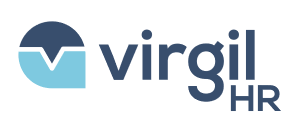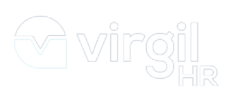Open enrollment is an important time of the year for employees, HR professionals, and the overall organization. It’s also a time when companies must put their best compliance foot forward. From HSA contribution limits to ACA affordability, there are several guidelines HR professionals must follow to avoid any instances of noncompliance. This article walks HR professionals through key considerations to make when it’s time to review employee benefits and maintain compliance every step of the way.
What is Open Enrollment?
Open enrollment is a period that unfolds once a year. This is when employees get the opportunity to make additions or changes to their current fringe benefits, such as health insurance. It generally applies to your organization’s life, health, vision, and dental insurance programs.
For instance, if an employee chooses not to enroll in a vision insurance program this year, they must wait until next year’s program to enroll in a new vision plan, or for a change of events to occur, such as a spouse losing coverage with his or her employer..
Open enrollment gives employees the chance to enroll or disenroll from plans based on their evolving needs. Planning and reviewing an open enrollment can take time. There are several regulations to follow and several requirements to take into account. It is typically recommended to start the review process a few months in advance. For instance, if your organization renews its health insurance in January of next year, the review process must start before September this year.
How Can Organizations Maintain Compliance During Open Enrollment?
Running this process in a compliant manner requires HR professionals and insurance agents to work together as a team while ensuring compliance and timeliness.
- Comply With ACA Requirements. Under the Affordable Care Act (ACA), organizations with 50 or more employees must offer health insurance to a minimum of 95% of employees. Not complying with ACA requirements could lead to several penalties. Some of these requirements include:
- Offering affordable coverage: The employee’s share of the premium for self-only coverage does not exceed a certain percentage of their household income.
- Minimum Essential Coverage: The employer must meet the minimum essential coverage requirements.
- Minimum Value: Coverage pays at least 60% of the total allowed cost of benefits.
- Reporting Requirements: Annually file returns with the IRS and provide statements to their full-time employees about the coverage offered.
- Waiting Period Limitations: New employees must generally be eligible for coverage within 90 days.
- Notice of Coverage Options: Must provide employees with a notice informing them of the availability of coverage through the Health Insurance Marketplace
- Anti-Retaliation Rules: Employers cannot engage in retaliatory actions against employees who either pursue coverage through the Marketplace or qualify for premium tax credits when obtaining coverage via the Marketplace.
- Affordable Safe Harbors: Employers can use several safe harbors to ensure they are offering affordable coverage to their employees.
- Transparency in Coverage: A summary of benefits and coverage employees must be provided during open enrollment.
- Educate Your Employees. Your employees must know how your organization’s open enrollment process will unfold. They must also be familiar with the given deadlines and know specific plan rules like HSA requirements and Flex. Once your employees know the A to Z of your enrollment process, they can play their part in terms of helping the organization stay compliant.
- Maintain ERISA Compliance. Though not directly tied to open enrollment, it’s important to note that, according to the requirements of the Employee Retirement Income Security Act (ERISA), businesses must offer COBRA beneficiaries and employees a Summary Plan Description (SPD) every five years when they become newly eligible, or within one month of a request.
- Consider the Privacy and Security Elements. Maintain the best privacy and security practices to ensure your employee data remains safe and you adhere to privacy and security laws. For example, data encryption, secure communication, privacy policies, incident response plans, and regular audits are all elements that can help keep your organization compliant during open enrollment.
- Maintain Compliance During Electronic Delivery. For employees who don’t regularly use a computer as a part of their jobs, ensure the materials related to open enrollment reach them in a compliant manner.
What’s the Role of HR?
The HR department lies at the forefront of every open enrollment process. From reviewing the plan, to complying with guidelines, to sending out disclosures and notices – it is critical for HR professionals to ensure their organization’s process remains fully compliant. Here are a few things HR professionals can consider to run a compliance-first open enrollment process:
- Have A Comprehensive Plan. Before kickstarting your process, the HR team must sketch a comprehensive plan to review and execute the process in a timely manner. The plan must list all laws, regulations, and guidelines surrounding open enrollment to ensure absolute compliance.
- Start Early. This can be a lengthy process. There are vendors to shop for, employee cost sharing to determine, and regulations to note. To ensure no last-minute non-compliance hiccups occur, it’s critical to reach out to your insurance agents at least five months before the renewal date.
- Communicate Important Disclosures and Notices. To understand their benefit plan in depth, your employees will need detailed benefit disclosures. These can include Summary Plan Description (SPDs) and Summary of Benefits and Coverages (SBCs). Some companies even hand out short disclosures like the SMM (Summary Material Modification) alongside the more solid SPDs. Aside from benefit disclosures, companies must also consider sending out standard required notices. These include Women’s Health and Cancer Rights (WHCRA) and the Children’s Health Insurance Program Reauthorization Act (CHPRA).
- Keep Your Vendors in the Loop. Open enrollment requires upholding compliance timelines from both your organization’s and your vendors’ sides. Try to align your timelines with those of your vendors to ensure everyone stays on the same page.
Why Compliance During Open Enrollment Matters
As your organization’s open enrollment period inches closer, it is critical to pay attention to its compliance side of things.
Every company understands that the cost of non-compliance is high. It’s not just limited to monetary losses. Aside from the loss of revenue, not complying with laws surrounding open enrollment can come with heavy reputational and legal losses.
To ensure you take every step with compliance in mind, it is critical to be aware of any regulatory changes that may occur before, during, or after your open enrollment process. To help HR stay on top of this, VirgilHR has a software solution that enables them to determine whether they put their best compliance foot forward. This software offers detailed steps you must take to be compliant and keeps you updated with the latest changes in employment and labor laws.
Stay updated with the guidelines that the IRS sets in place, including the ACA affordability requirements and HSA contributions limits. Before finalizing the contribution breakdown with your workforce, make sure you perform the right calculations. This can help keep your budgets within the published guidelines.
A Final Word
Remaining compliant during open enrollment requires HR to take several factors into account. Make sure you review your health and well-being plans before announcing them. To ensure your renewal process stays on track, make sure you review it within a specific timeline. Find out which laws, regulations, and requirements surround the overall process. Understand these requirements thoroughly and let them guide you through every step of the way.





